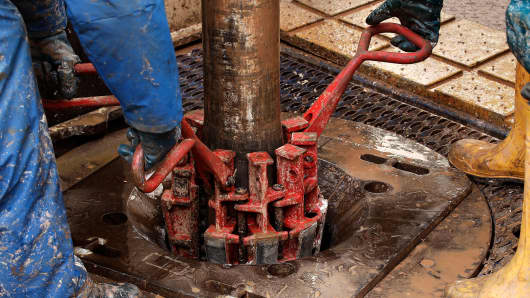Mitsui, Mitsubishi and Nippon Yusen of Japan, and GDF Suez of France, which had already agreed to buy LNG from Cameron, will provide construction financing in return for equity stakes totaling 49.8 percent.
Mark Snell, president of Sempra Energy, the project developer, said the deal "promotes a favorable balance of trade for the national economy, and supports national and international energy security by assuring reliable long-term gas supplies to U.S. allies and trading partners."
He estimated the contribution of the Japanese and French groups at between $6 billion and $7 billion of the facility's $9 billion-$10 billion construction cost.
Shale gas production has soared in the US in recent years, creating a supply glut that has driven prices down to about $4 per million British thermal units from a peak above $13 in 2008.
Cargoes of LNG, super cooled to minus 160 degrees so it can be transported on tankers, are selling in Asia for the equivalent of about $15 per mBTU, creating an attractive opportunity for exports from the U.S.
Twenty-six proposed US LNG plants have applied to the Department of Energy for export permits, but before Friday, only one – Cheniere Energy's Sabine Pass development in Louisiana – had been granted permission to sell to countries that do not have a trade agreement with the U.S.
The U.S. energy department said it would work through the remaining applications in order. The Cameron project is towards the top of the list and analysts believe it is likely to win approval for global exports this year.
More From the FT
LNG Deal Opens Door for Texas Imports to UK
Obama Backs Rise in US Gas Exports
Japan Wakes Up to US Shale Revolution
However, the department added that at the end of this year it would "assess the impact of any market developments" on future decisions, a concession to fears that the cumulative impact of allowing a series of LNG export developments might push U.S. gas prices higher.
Japanese utilities have been particularly interested in projects such as Sabine Pass because its gas is priced off Henry Hub, the US benchmark, which is much cheaper than the oil-indexed price in many of the world's long-term LNG supply contracts.
Japan is already the world's largest importer of LNG, and the crippling of its nuclear industry by the 2011 meltdown at Fukushima Daiichi atomic power station has only increased its demand. Tokyo Electric Power, owner of the Fukushima plant, signed a deal to buy Cameron gas in February.
Mitsui and Mitsubishi are the largest of Japan's huge trading and investment houses. Mitsui is to take a 16.6 per cent stake in Cameron, while Mitsubishi and Nippon Yusen, a shipping company, will together take 16.6 per cent through a joint venture. GDF Suez, the French utility, will also take 16.6 per cent.
Jun Nishizawa, vice-president of the global gas business department for Mitsubishi, said: "By participating in this LNG export project, we are proud to be able to contribute not only to the development of stable energy trade between the U.S. and countries around the world, including Japan, but also to the growth of the US economy."
Jean-Marie Dauger, head of GDF Suez's global gas and LNG business, said the project would serve to "expand and diversify the group's LNG portfolio and increase its flexibility for supplying existing or future markets in high-growth areas".
GDF Suez is Europe's largest LNG importer and the world's third-largest seller of LNG with a portfolio of 16 million tonnes a year.


